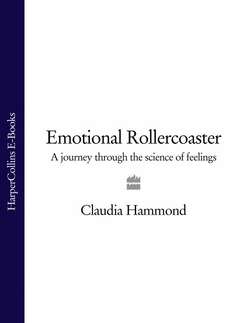Читать книгу Emotional Rollercoaster: A Journey Through the Science of Feelings - Claudia Hammond - Страница 24
the message of tears
ОглавлениеRandy Cornelius sat in a studio at his local radio station WSPK in Poughkeepsie, USA – the radio station promising to play ‘today’s best music’. He’s a psychology professor at Vassar College and was waiting to be connected to the gloomy cupboard of a studio where I was sitting at the BBC in London, waiting to interview him for a radio series. It took a while and I could hear various engineers from both the British and American ends come over the headphones. Then, another voice with an American accent, ‘Hello, hello, can anybody hear me?’ I wasn’t sure whether I’d reached the man himself or another engineer. ‘Are you Randy?’ I asked. ‘I sure am,’ he said, causing mirth at the British end, but not a flicker from the States, where it doesn’t have quite the same meaning. Once it was established that the link between the studios was working, we went on to have a serious discussion about crying.
In contrast to Professor Frey, he believes that tears are all about communication; they let other people know that you’re upset, information which might ultimately benefit you. Crying could be a powerful way of telling another person that their ‘harmless’ teasing has in fact touched a nerve and that they should stop. It also signals to those around you that you need their sympathy or help.
After Julia and her fiancé split up she was walking along the street sobbing uncontrollably when a stranger approached her offering help. Because she was crying so much she couldn’t answer and shook her head. Tears provide such a strong message that they can even elicit help from strangers. Cornelius believes the failure of the laboratory studies to demonstrate benefits from crying is due to the fact that during the experiments nobody receives any comfort from another, so they haven’t gained any help by crying and therefore don’t feel any happier afterwards.
Think of the kinds of situation where you tend to cry. When Randy Cornelius asked people to do this the occasions most often cited were the death of a friend, the end of a relationship, watching a sad film or poignantly happy events like a wedding. Now think back to the last time you actually did cry. Here it was a slightly different story. Tears tended to follow arguments or rejection or feelings of loneliness or inadequacy. Cornelius believes helplessness might be the key reason we cry; we feel we can’t do anything to change the situation, so we cry. Or to put it another way, we can’t do anything more for ourselves, so we need other people’s help and it’s crying which signals the seriousness of our situation. Babies cry in order to get the attention and help they need. Perhaps adults are doing the same.
